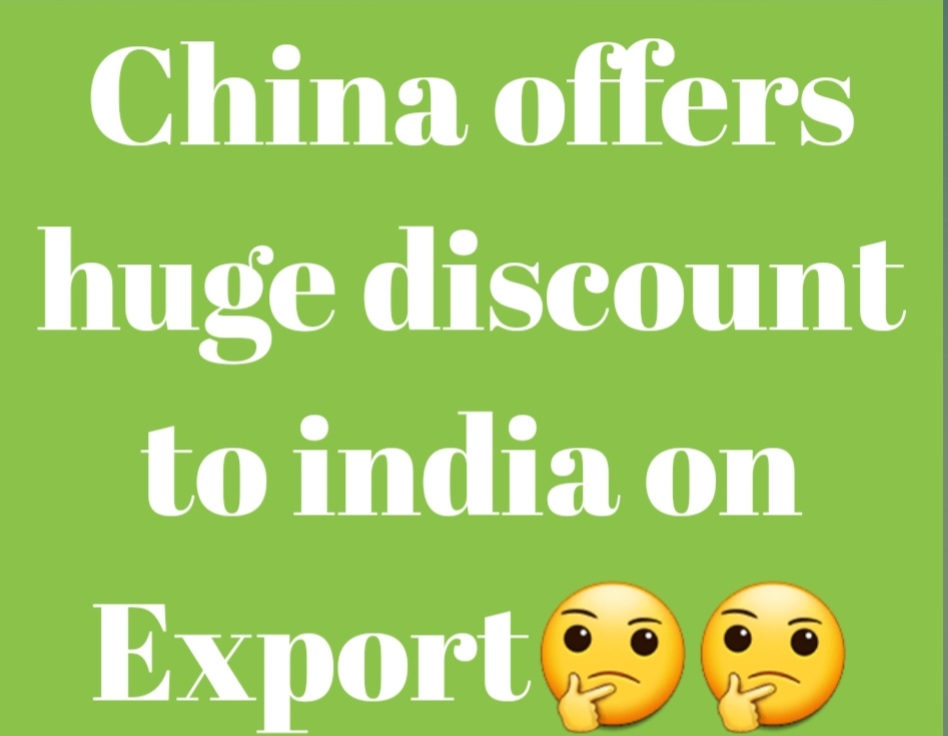Facing global economic pressure, China turns to India for support and offers massive export discounts. Explore what this means for India’s economy, trade relations, and global positioning.

In an unexpected move, China has approached India for economic cooperation, offering steep discounts on its products as it struggles under global trade sanctions, especially from the United States. Furthermore this unusual partnership unfolds, it signals a potential shift in Asia’s economic dynamics and global trade alignments.
The Trade War That Changed Everything
Recent months have seen the world economy rocked by aggressive trade measures. The U.S., under President Donald Trump, has imposed massive “reciprocal tariffs” on Chinese imports—reaching up to 104%. China, in return, faces reduced market access and weakened manufacturing output.
To counteract these pressures, China is reaching out to regional powers—including its traditional rival, India.
Why Is China Turning to India?
India, with a booming consumer base and expanding industrial capabilities, is well-placed to absorb excess Chinese exports. More importantly, India’s balanced diplomatic stance makes it an appealing partner for a country like China that is finding itself increasingly isolated in Western trade markets.
What’s on Offer?
China is reportedly offering up to 40% discounts on a wide range of exports to India:
Consumer electronics
Industrial and agricultural machinery
Solar energy equipment
Mobile phone components
Raw materials and textiles
For Indian importers, this could mean lower production costs and a stronger supply chain—particularly useful for MSMEs and large manufacturers alike.
“This is a rare moment when economic survival trumps rivalry. China offering India help is both strategic and symbolic.”
— R. Menon, Trade Analyst
India’s Strategic Dilemma
While the offer sounds tempting, India must tread carefully. Dependence on Chinese imports may threaten the ‘Make in India’ initiative. Also, security and sovereignty concerns still linger from past border conflicts and digital bans on Chinese apps.
The Indian government has signaled that any trade with China will be “measured, strategic, and in line with national interest.”
Potential Benefits for Indian Industry
1. Lower Costs for MSMEs: Affordable raw materials and parts can improve profit margins.
2. Tech & Mobile Sector Boost: India imports over 70% of its mobile components from China.
3. Renewables & Infrastructure: Solar and infrastructure projects could accelerate thanks to cheaper equipment.
Geopolitical Ripple Effects
This growing economic bond could have far-reaching consequences:
Shift in Alliances: China trying to woo India might weaken U.S.-led coalitions in Asia.
Pressure on U.S.-India Ties: India’s response will be closely watched by Washington.
Possible Return to RCEP Talks: India may reconsider joining the Regional Comprehensive Economic Partnership.

What Are Experts Saying?
Economists and political analysts are split:
Some argue India should seize the opportunity to expand its industrial base and secure cheaper imports.
Others believe long-term sovereignty risks outweigh short-term economic benefits.
Public opinion also remains divided, with trends like #BoycottChineseGoods clashing with #TradeSmartIndia on social media.
Environmental and Economic Challenges Add Urgency
Meanwhile, India is battling its own set of challenges—from inflation to extreme weather events. In such times, cost-effective imports could help stabilize critical sectors.
However, India also must remain vigilant against overdependence and ensure domestic producers are not sidelined.
Conclusion: Strategic Partnership or Temporary Truce?
China’s economic gesture to India is more than just about trade—it’s about shifting power balances in a tense global economy. For India, this could be an opportunity to cement its place as a key player on the world stage.
Whether this turns into a long-term partnership or remains a crisis-driven adjustment depends on India’s strategic moves in the coming months.
